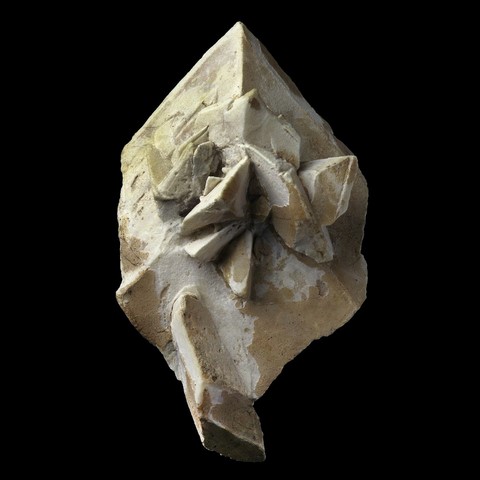GLAUBERITE
Class : Sulfates, chromates, molybdates
Subclass : Anhydrous sulfates
Crystal system : Monoclinic
Chemistry : Na2Ca(SO4)2
Rarity : Quite common
Glauberite is a frequent mineral in salt deposits of marine or lake origin, associated with rock salt (halite); it is also found in fumaroles and in nitrate deposits in desert regions. This mineral owes its name to the German chemist and physicist Johann Rudolf Glauber (1604-1668) who gave his name to sodium sulfate (Glauber's salt), contained in large quantities in glauberite. The crystals show various facies : often flattened lozenges, sometimes prismatic or pyramidal, with the faces often striated parallel to their intersection ; it is also common in lamellar masses. Glauberite is often colorless to yellowish gray, sometimes brick red. Like gaylussite, it is commonly transformed into calcite (pseudomorph). It is incidentally a sodium ore, and a mineral little known to collectors.
Glauberite in the World
Glauberite in France
In France, glauberite is present in the salt layers of Lorraine (Varangéville, France).
Twinning and special crystallization
Glauberite is a mineral that is commonly replaced by calcite.
Fakes and treatments
No scam known for this mineral.
Hardness : 2.5 to 3
Density : 2.75 to 2.85
Fracture : Conchoidal
Trace : White
TP : Opaque to transparent
RI : 1.507 to 1.536
Birefringence : 0.022
Optical character : Biaxial -
Pleochroism : None
Fluorescence : White to blue
Solubility : Hydrochloric acid
Magnetism : None
Radioactivity : None

